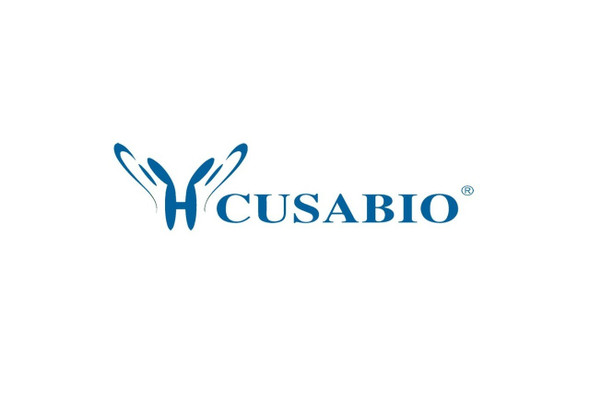Cusabio Drosophila melanogaster Recombinants
Recombinant Drosophila melanogaster DNA-directed RNA polymerase II subunit RPB1 (RpII215), partial | CSB-YP018327DLU
- SKU:
- CSB-YP018327DLU
- Availability:
- 25 - 35 Working Days
Description
Recombinant Drosophila melanogaster DNA-directed RNA polymerase II subunit RPB1 (RpII215), partial | CSB-YP018327DLU | Cusabio
Alternative Name(s): DNA-directed RNA polymerase III largest subunit
Gene Names: RpII215
Research Areas: Others
Organism: Drosophila melanogaster (Fruit fly)
AA Sequence: YSPTSPNYTASSPGGASPNYSPSSPNYSPTSPLYASPRYASTTPNFNPQSTGYSPSSSGYSPTSPVYSPTVQFQSSPSFAGSGSNIYSPGNAYSPSSSNYSPNSPSYSPTSPSYSPSSPSYSPTSPCYSPTSPSYSPTSPNYTPVTPSYSPTSPNYSASPQYSPASPAYSQTGVKYSPTSPTYSPPSPSYDGSPGSPQYTPGSPQYSPASPKYSPTSPLYSPSSPQHSPSNQYSPTGSTYSATSPRYSPNMSIYSPSSTKYSPTSPTYTPTARNYSPTSPMYSPTAPSHYSPTSPAYSPSSPT
Source: Yeast
Tag Info: N-terminal 6xHis-tagged
Expression Region: 1579-1881aa
Sequence Info: Partial
MW: 33.6 kDa
Purity: Greater than 90% as determined by SDS-PAGE.
Relevance: DNA-dependent RNA polymerase catalyzes the transcription of DNA into RNA using the four ribonucleoside triphosphates as substrates. Largest and catalytic component of RNA polymerase II which synthesizes mRNA precursors and many functional non-coding RNAs. Forms the polymerase active center together with the second largest subunit. Pol II is the central component of the basal RNA polymerase II transcription machinery. It is composed of mobile elements that move relative to each other. RPB1 is part of the core element with the central large cleft, the clamp element that moves to open and close the cleft and the jaws that are thought to grab the incoming DNA template. At the start of transcription, a single-stranded DNA template strand of the promoter is positioned within the central active site cleft of Pol II. A bridging helix emanates from RPB1 and crosses the cleft near the catalytic site and is thought to promote translocation of Pol II by acting as a ratchet that moves the RNA-DNA hybrid through the active site by switching from straight to bent conformations at each step of nucleotide addition. During transcription elongation, Pol II moves on the template as the transcript elongates. Elongation is influenced by the phosphorylation status of the C-terminal domain (CTD) of Pol II largest subunit (RPB1), which serves as a platform for assembly of factors that regulate transcription initiation, elongation, termination and mRNA processing
Reference: "Analysis of the gene encoding the largest subunit of RNA polymerase II in Drosophila."Jokerst R.S., Weeks J.R., Zehring W.A., Greenleaf A.L.Mol. Gen. Genet. 215:266-275(1989)
Storage: The shelf life is related to many factors, storage state, buffer ingredients, storage temperature and the stability of the protein itself. Generally, the shelf life of liquid form is 6 months at -20?/-80?. The shelf life of lyophilized form is 12 months at -20?/-80?.
Notes: Repeated freezing and thawing is not recommended. Store working aliquots at 4? for up to one week.
Function: DNA-dependent RNA polymerase catalyzes the transcription of DNA into RNA using the four ribonucleoside triphosphates as substrates. Largest and catalytic component of RNA polymerase II which synthesizes mRNA precursors and many functional non-coding RNAs. Forms the polymerase active center together with the second largest subunit. Pol II is the central component of the basal RNA polymerase II transcription machinery. It is composed of mobile elements that move relative to each other. RPB1 is part of the core element with the central large cleft, the clamp element that moves to open and close the cleft and the jaws that are thought to grab the incoming DNA template. At the start of transcription, a single-stranded DNA template strand of the promoter is positioned within the central active site cleft of Pol II. A bridging helix emanates from RPB1 and crosses the cleft near the catalytic site and is thought to promote translocation of Pol II by acting as a ratchet that moves the RNA-DNA hybrid through the active site by switching from straight to bent conformations at each step of nucleotide addition. During transcription elongation, Pol II moves on the template as the transcript elongates. Elongation is influenced by the phosphorylation status of the C-terminal domain (CTD) of Pol II largest subunit (RPB1), which serves as a platform for assembly of factors that regulate transcription initiation, elongation, termination and mRNA processing (By similarity).
Involvement in disease:
Subcellular Location: Nucleus
Protein Families: RNA polymerase beta' chain family
Tissue Specificity:
Paythway:
Form: Liquid or Lyophilized powder
Buffer: If the delivery form is liquid, the default storage buffer is Tris/PBS-based buffer, 5%-50% glycerol. If the delivery form is lyophilized powder, the buffer before lyophilization is Tris/PBS-based buffer, 6% Trehalose, pH 8.0.
Reconstitution: We recommend that this vial be briefly centrifuged prior to opening to bring the contents to the bottom. Please reconstitute protein in deionized sterile water to a concentration of 0.1-1.0 mg/mL.We recommend to add 5-50% of glycerol (final concentration) and aliquot for long-term storage at -20?/-80?. Our default final concentration of glycerol is 50%. Customers could use it as reference.
Uniprot ID: P04052
HGNC Database Link: N/A
UniGene Database Link: UniGene
KEGG Database Link: KEGG
STRING Database Link: STRING
OMIM Database Link: N/A










